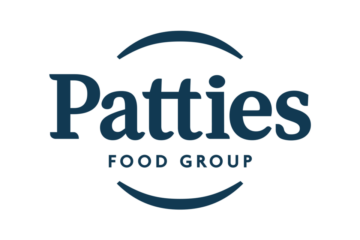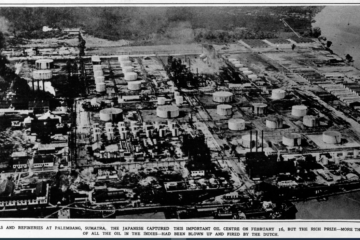Dutch Communal Life in Victoria
By Henk Overberg
Henk Overberg’s detailed sociological and historical analysis of the Dutch in Victoria reveals that ethnic communities do not simply emerge by demographic presence alone. Rather, they must be made—through shared identity, communal interaction, organisational structures, and the development of collective memory. Overberg contends that Dutch communal life in Victoria is a vivid case study of this dynamic: it has evolved through pillars of religion, social bonding, age-related needs, and strategic adaptation to Australia’s multicultural framework.
Defining Community
Overberg opens by distinguishing between a mere “crowd” (e.g. 95,000 Dutch-born Australians) and a true “community.” A community requires shared identity, sustained interaction, institutional structures, and a corporate memory. In the Dutch-Australian context, community life has taken form through clubs, churches, care institutions, cultural activities, language preservation efforts, and the roles of key community figures.
Zuilen (Pillars) and the Transfer of Dutch Social Structures
One of the defining features of early Dutch-Australian community formation was the transplantation of the Netherlands’ zuilen (pillarised social system), where life was compartmentalised into religious or ideological blocs—Catholic, Protestant, Socialist, etc. Dutch immigrants brought this structure with them to Australia. Catholic chaplains, Protestant ministers, and Reformed Calvinists set up parallel structures from the outset.
These blocs initially helped immigrants maintain their identity and offered support for assimilation. Figures such as Father Leo Maas (Catholic) and Marius Geursen (liberal Protestant) established key institutions, while the Reformed Church built a full infrastructure (churches, schools, care homes), maintaining religious distinctiveness while pursuing cultural assimilation.
Cultural Continuity and Identification Needs
Early Dutch social groups in Australia offered expressive comfort and cultural familiarity—food, language, dances, festivals (e.g. Sinterklaas), and rituals from postwar Netherlands. These “identification needs” kept the migrant community cohesive and connected to its roots. Overberg notes that these groups helped preserve a snapshot of 1950s Dutch social life, often more rigidly than in the Netherlands itself, which moved on to a post-pillarised society (ontzuiling).
Strategic Ethnicity and ‘Retribalisation’
In the 1980s, as Australia adopted multiculturalism and began allocating resources to ethnic communities, the Dutch—previously proud of their seamless assimilation—realised that their lack of visibility became a liability. Unlike Greeks and Italians, they hadn’t positioned themselves as an ethnic group “in need.” This triggered a form of strategic identity revival: “retribalisation,” where ethnicity was repurposed to justify claims for aged care, community resources, and funding.
Community leaders argued that visibility, organisation, and advocacy were now essential. Institutions like the Holland Australia Retirement Foundation (HARF), DutchCare, and the Australian Dutch Community Services emerged to serve an ageing population and professionalise community activity.
Media, Education, and Language Maintenance
Dutch-language media formed another crucial element of community infrastructure. Religious publications like Onze Gids and Nederlands Kerkewerk date back to the 1950s. Secular publications like Dutch Weekly and the Dutch Courier kept the community informed and connected. Despite this, Dutch language education—once present at the University of Melbourne—eventually declined due to low enrolments and minimal community support. Visiting academics conducted linguistic studies on Dutch-Australian language retention, but high culture activities have remained marginal, with only the Erasmus Society consistently promoting Dutch arts and letters.
Ageing and Structural Shifts
By the 1990s, Dutch community groups in Victoria were ageing rapidly. Over 70% of group members were aged over 60, with 40% over 70. Younger generations—either Australian-born or second-generation Dutch—showed little interest in community life or ethnic identification. Despite periodic efforts (e.g. “Going Dutch”), intergenerational succession remained elusive.
This demographic reality shaped Dutch community priorities: aged care services, health, and welfare became central. Yet this also increased dependence on government structures and posed the risk of losing autonomy, as decisions about community resources were increasingly made by external authorities (e.g. SBS, universities, government funding bodies).
Current Reach and Legacy
By the mid-1990s, Dutch community life in Victoria was highly organised, though concentrated among the elderly. With around 3,300 active Dutch-born members in 56 groups, the community had built an impressive infrastructure: aged care homes (Beatrix Village, Princess Margriet Hostel, Avondrust, Providence Village), radio broadcasts, Dutch-language newspapers, and ethnic social clubs. Radio and SBS-TV offered Dutch programming, and regional accessibility to clubs was generally high.
However, Overberg identifies three future concerns:
- Succession: How to maintain community relevance as its core membership ages.
- Generational transition: Second-generation Dutch-Australians are not assuming community leadership roles.
- Loss of autonomy: As Dutch groups rely on external funding, they risk losing control over their own agendas.
The Dutch community in Victoria has become a model of structural ethnic organisation in Australia. But its long-term viability will depend on how it can renew itself in the absence of new migration and with diminished generational continuity.
Author Biography: Henk Overberg
Dr. Henk Overberg was a Senior Lecturer at the School of Australian and International Studies at Deakin University, Melbourne and an academic researcher at Victoria College, Melbourne. He specialised in ethnic research and researched the history and culture of the Dutch community in Victoria, Australia.
He was a leading authority on Dutch-Australian migration, ethnic identity, and community development. Based in Victoria, he has written extensively on postwar Dutch migration, religious identity, and the sociology of ethnic communities. Overberg is particularly known for his long-term field research and surveys into Dutch community organisations, especially in Victoria, and for tracking their transformation from religiously structured migrant associations to modern aged care and welfare institutions.
His 1986 and 1996 surveys of Dutch community groups remain some of the most detailed longitudinal studies of an ethnic community in Australia. He has also written extensively on “retribalisation,” aged care, media representation, and the role of Dutch language in immigrant identity. His scholarship, while rigorous, remains accessible and deeply rooted in the lived experience of Australia’s Dutch diaspora.

His publications include numerous academic journal articles, reports, and key contributions to volumes such as The Australian People (edited by James Jupp).
· Dutch aged in Victoria, a book published by Victoria College in Melbourne in 1984.
· Dutch in Victoria 1947–1980; Community and ideology, published in the Journal of Intercultural Studies in 1981.
- Dutch Aged as Minority Aged: Situations and Perceptions published in Australasian Journal on Ageing.The article was published on 1984-12-01
· An article on Dutch Clubs in Victoria,
· He was a contributor to the Australian Dictionary of Biography, where he wrote biographies of two Dutch-Australian figures: Leo Maas and Franciscus Leddy.

